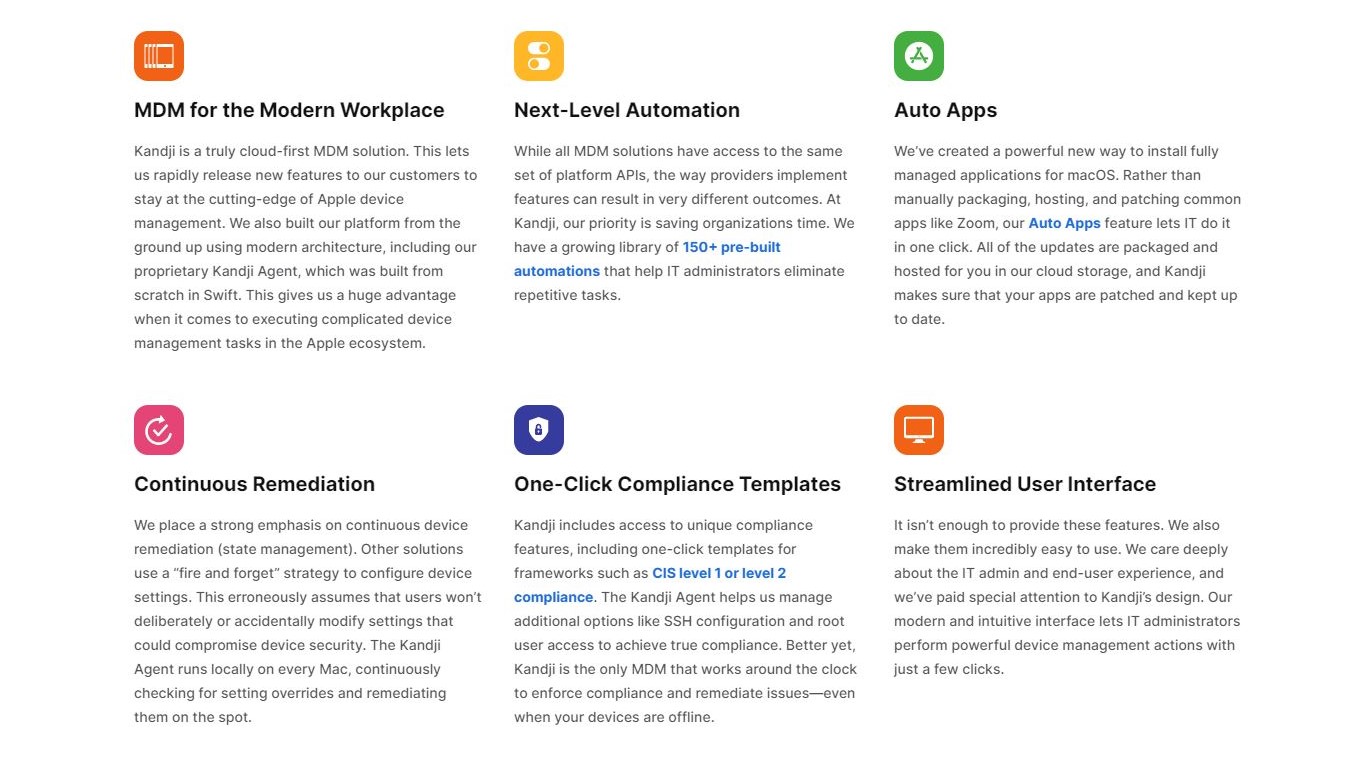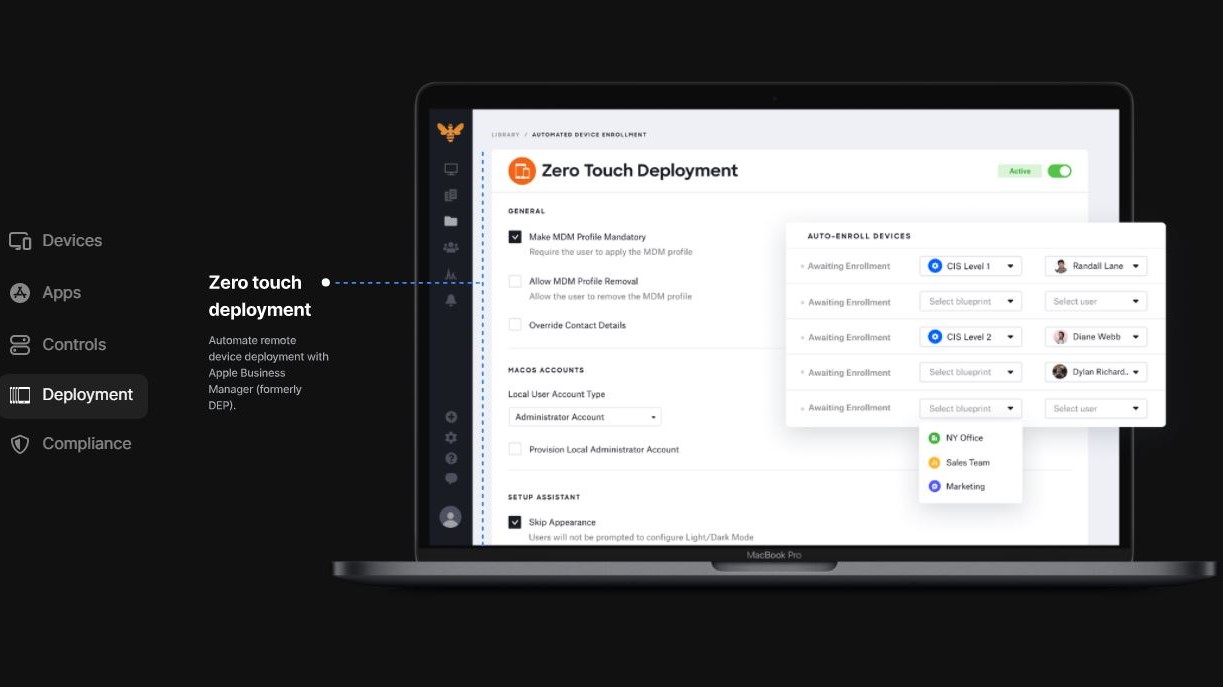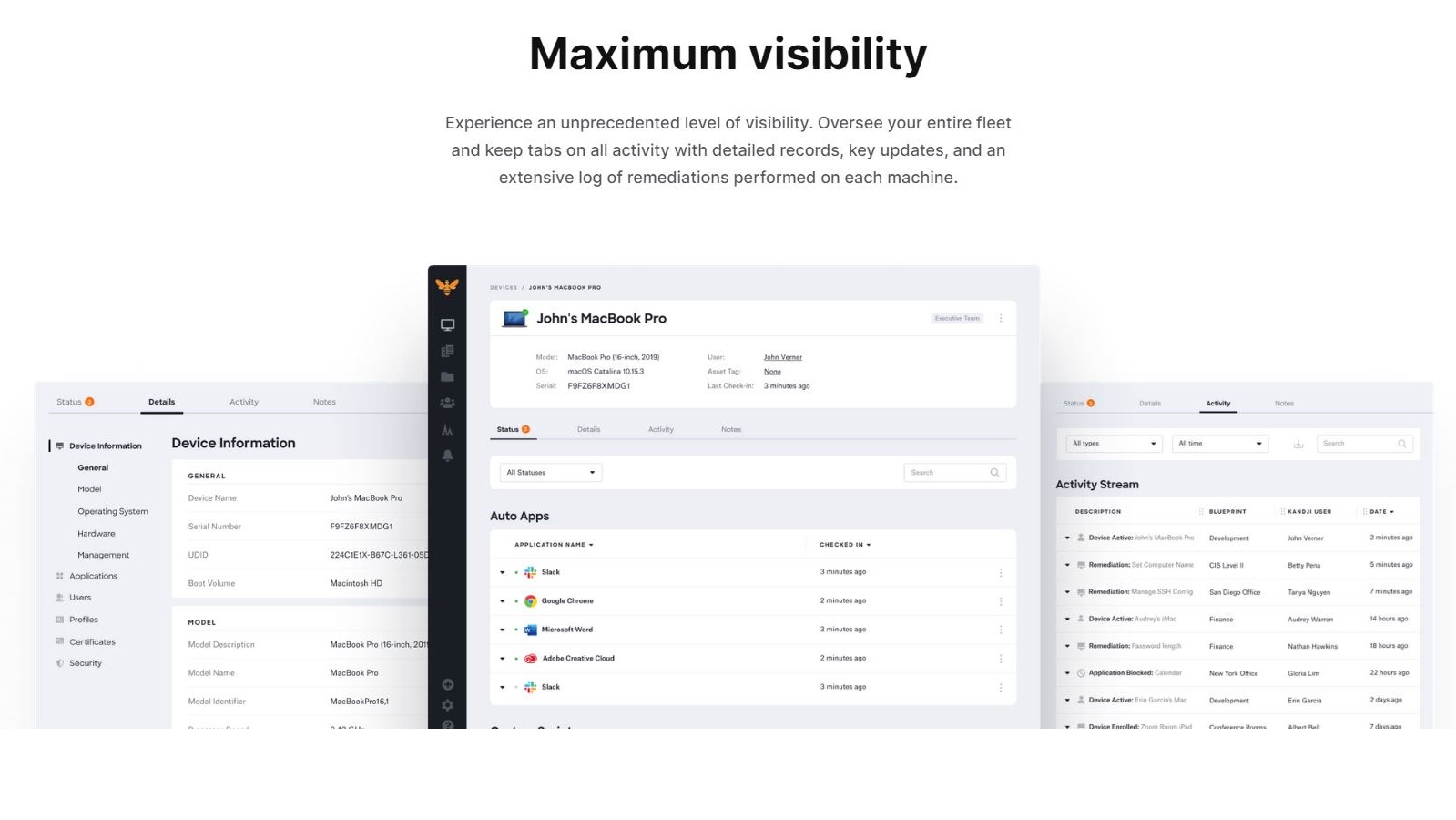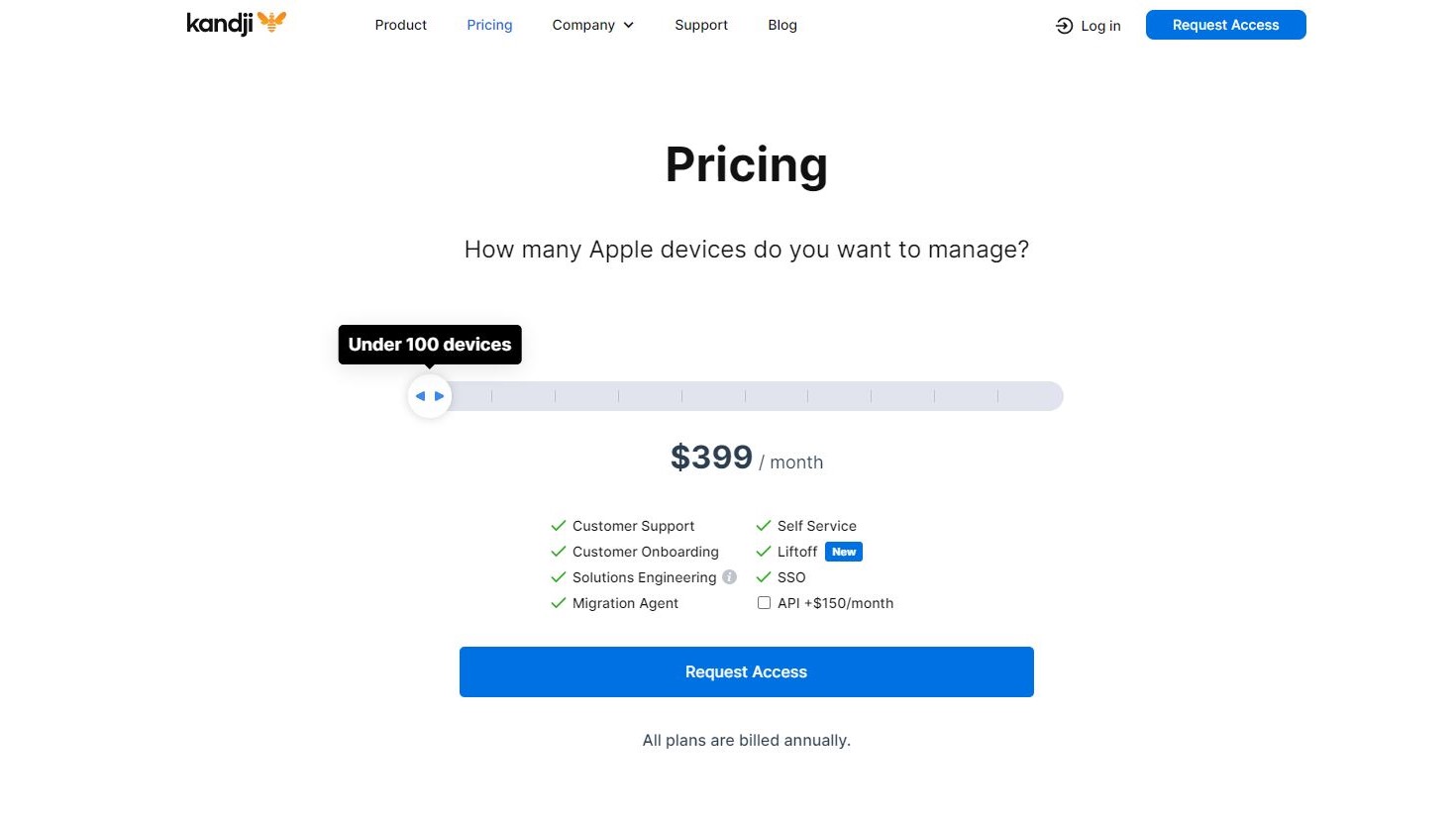[ad_1]
Mobile Device Management (MDM) software allows the remote administration of portable technology, such as smartphones, tablets, and laptops. It ensures security privileges, software, and operating system patching, can find and erase lost or stolen devices, and more.
Most MDM solutions allow the administration of multiple mobile platforms. Increasingly, MDM is being swallowed up by UEM (Unified Endpoint Management) and becoming just a single aspect of digital hardware management. Understandably, the aim is to ensure that all devices, irrespective of manufacture and operating system, can be managed remotely.
Kandji is a little different. Rather than provide an MDM that is closer to a UEM, it offers a focused experience, allowing only the management and administration of Apple devices. This overview of Kandji’s features will help you decide if this is the MDM solution for your organization.

Features
Managing and regulating mobile devices on your network is made easy with Kandji. Thanks to the zero-touch enrollment feature, adding a new device is a breeze and doesn’t require physical interaction from technicians. This means that employees won’t have to schedule a visit with the IT department. You can also enroll devices through G Suite or Microsoft 365.
Kandji’s Blueprints feature allows administrators to easily assign apps, controls, and automations to specific devices. Blueprints can be created for particular teams, locations, or purposes.
You can view audit information for devices in Kandji, which displays device status, installed apps, and current activity. Kandji also keeps an extensive log for each system it manages. A library of approved apps and tools can be curated for closely monitored environments, allowing end users to install the necessary apps without IT involvement.
Kandji’s compliance features remain in place even if a device goes offline to ensure device integrity. Custom profiles and scripts provide specific device behavior, such as connecting to the correct wireless network. Compliance templates and a library of over 150 security controls make achieving easy security and best practices a breeze.

For macOS devices like MacBook, the Liftoff feature automates an enterprise-ready configuration straight out of the box.
Not sure about switching from your current MDM to Kandji? Don’t worry – it features a migration tool to bring devices from a legacy MDM.

Installation and setup
Kandji offers various enrollment methods for your devices. You can enroll all devices through Automated Device Enrollment or the Kandji Enrollment Portal.
Automated Device Enrollment is used for newly assigned or restored devices in Apple Business Manager. On the other hand, the Kandji Enrollment Portal is for devices already set up and cannot be reset or restored. Additionally, devices not available in Apple Business Manager can still be enrolled through the Kandji Enrollment Portal.
For iPhones, iPads, and Apple TVs not purchased through Apple Business Manager, you can use Apple Configurator 2 to enroll them. This feature is handy for BYOD users. Lastly, the DEP NAG automated enrollment procedure is utilized in the terminal to enroll macOS devices.
Compatibility
Kandji is a mobile device management (MDM) tool focusing primarily on Apple hardware, including iPhones, iPads, MacBooks, iMacs, and tvOS. It operates using Apple’s MDM protocol and is compatible with iOS 14/iPadOS 14 or later for phones and iPads, as well as macOS 10.15 and later and tvOS 14 and higher. However, it does have limitations in terms of device compatibility.
In addition to managing mobile devices, Kandji can also manage desktops through a combination of Apple MDM and its macOS Agent. One of the benefits of Kandji is that your organization can use it without needing devices connected to Apple Business Manager.

Usability
Kandji is an exceptional software when it comes to managing Apple products. Its user-friendly interface is designed thoughtfully to cater to essential Mobile Device Management (MDM) workflows, including devices, apps, controls, deployment, and compliance. The UI is straightforward and intuitive, featuring drop-down menus and clickable boxes that make it simple to toggle features and settings per your preferences. Even if you have no experience with MDM, you can effortlessly navigate the software, making it an excellent choice for beginners and experts alike.
The best part is that Kandji’s interface is not only easy to use but also aesthetically pleasing, adding to the overall user experience. Its clean and modern design enhances the software’s functionality, making it a joy to work with. Kandji is a fantastic tool for anyone looking to manage Apple products with ease and efficiency. With its plethora of features and user-friendly interface, Kandji makes it easy to manage your devices and ensure compliance.

Plans and pricing
Kandji has a sliding scale licensing system that adds features as the number of devices increases. The basic package costs $399 per month and is for less than 100 devices. This package includes customer support, onboarding, solutions engineering, a migration agent, self-service, Liftoff, and an optional API for an additional $150.
For every additional 100 devices, the package increases by $400. The package costs $1,999 per month for 500 devices, and the API is included for free. The cost for 750 machines is $2,699, $3,499 for 1000 devices, $4,899 for 1500, $6499 for 2,000, and $8,999 per month for 3,000 devices.
Organizations requiring more than 3,000 devices would need to speak to Kandji’s sales department.
To break it down, Kandji costs $3.99 monthly for 100 devices on the lowest budget and $2.99 for 3,000 devices. This represents a small cost saving.
Kandji offers a 14-day trial for evaluation purposes, and a free demo is available on request.
Final Verdict
Kandji is a comprehensive mobile device management suite with a smooth and responsive user interface and an unmatched set of features. It is an excellent option for organizations prioritizing MDM over the race toward UEM, providing top-notch management capabilities for Apple devices.
However, one significant drawback of Kandji is its licensing structure. While the standard price of $3.99 per month for a single device is comparable to other MDM suites, paying the same amount for 50 or 100 devices may seem odd, which could be a significant issue for many MDM customers.
In conclusion, while Kandji is a reliable and user-friendly MDM solution, it’s essential to consider the licensing structure before committing to the service, mainly if your organization relies heavily on Apple hardware.
[ad_2]
Source link

